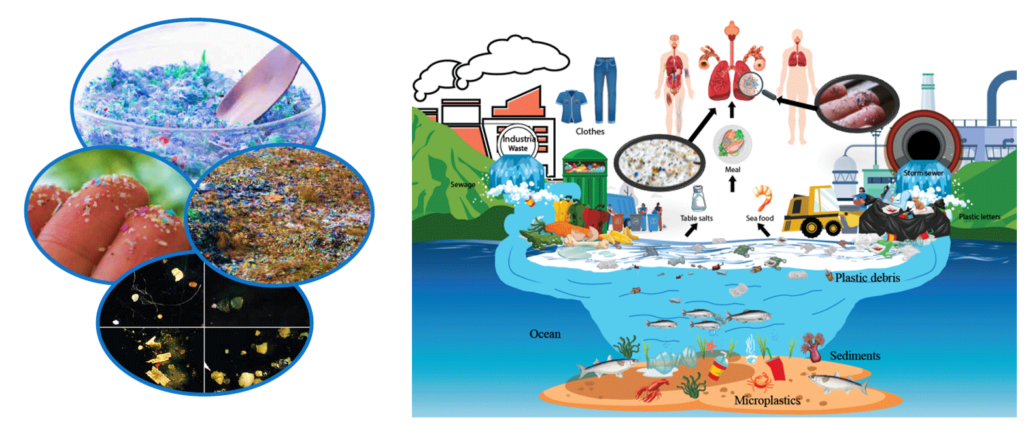Microplastics are small plastic particles that cause public health and environmental risks. Millions of tons of these particles have been discovered in seas, air, and soil. Global manufacturing is increasing, as is the density of microplastics in the atmosphere. Microplastics were found in human airways in 2022, prompting concerns about major respiratory health risks. Toxic contaminants and chemicals are commonly found in microplastics.
According to research, people may inhale 16.2 bits of microplastic each hour, equal to one credit card over a week. Additionally, these microplastics, microscopic pieces of environmental waste left behind from the breakdown of plastic items, frequently include hazardous substances and toxins.
Researchers created a computational fluid dynamics model to examine microplastic transport and deposition in the upper airway.

Author Mohammad S. Islam said, “Millions of tons of these microplastic particles have been found in water, air, and soil. Global microplastic production is surging, and the density of microplastics in the air is increasing significantly; for the first time, in 2022, studies found microplastics deep in human airways, which raises the concern of serious respiratory health hazards.”
The researchers investigated how microplastics moved in a variety of geometries (spherical, tetrahedral, and cylindrical), sizes (1.6, 2.56, and 5.56 microns), and breathing rates (slow and fast).
Hotspots in the oropharynx, the back of the throat, and the nasal cavity were familiar places for microplastics to congregate.
Islam said, “The complicated and highly asymmetric anatomical shape of the airway and complex flow behavior in the nasal cavity and oropharynx causes the microplastics to deviate from the flow pathline and deposit in those areas; the flow speed, particle inertia, and asymmetric anatomy influence the overall deposition and increase the deposition concentration in nasal cavities and the oropharynx area.”
They discovered microplastics deep into human airways, raising the worry of significant risks to respiratory health. The researchers investigated how microplastics moved in a variety of geometries (spherical, tetrahedral, and cylindrical), sizes (1.6, 2.56, and 5.56 microns), and breathing rates (slow and fast).
Due to the airway’s complicated anatomical structure and flow behavior, microplastics tended to build up in hot areas in the nasal cavity and oropharynx or back of the throat.
Breathing patterns and microplastic size controlled the overall rate of microplastic deposition in airways. The largest (5.56 micron) microplastics were deposited more frequently than their smaller counterparts, and a higher flow rate reduced deposition.
They expect the results will help inform targeted drug delivery devices and improve health risk assessment.
Author YuanTong Gu said, “This study emphasizes the need for greater awareness of the presence and potential health impacts of microplastics in the air we breathe.”
This study highlights the severe worry about microplastic exposure and inhalation, particularly in locations with high levels of plastic pollution or industrial activity. The researchers plan to investigate microplastic transport in a large-scale, patient-specific whole-lung model that takes into account environmental factors like humidity and temperature.
Journal Reference:
- Mohammad S. Islam, Emilie Sauret, etal. How are microplastics transported and deposited in realistic upper airways? Physics of Fluids. DOI: 10.1063/5.0150703
